► We drive the facelifted Renault Clio
► Fresh looks, new tech, same engines
► Can it become the new driver’s choice?
This is the facelifted Renault Clio – and its release couldn’t have been timed better. Now that Ford has swung the axe on the Fiesta, there’s a gaping chasm in the supermini market that manufacturers are desperately clamouring to fill.
Renault hopes the facelifted Clio will nobble two key niches in the supermini market – driving enthusiasts and hyper milers. For that reason, Renault has retained the old car’s sharp chassis setup and frugal 1.6-litre hybrid powertrain, choosing instead to focus on improving the car’s desirability with fresh styling and swanky new trim levels.
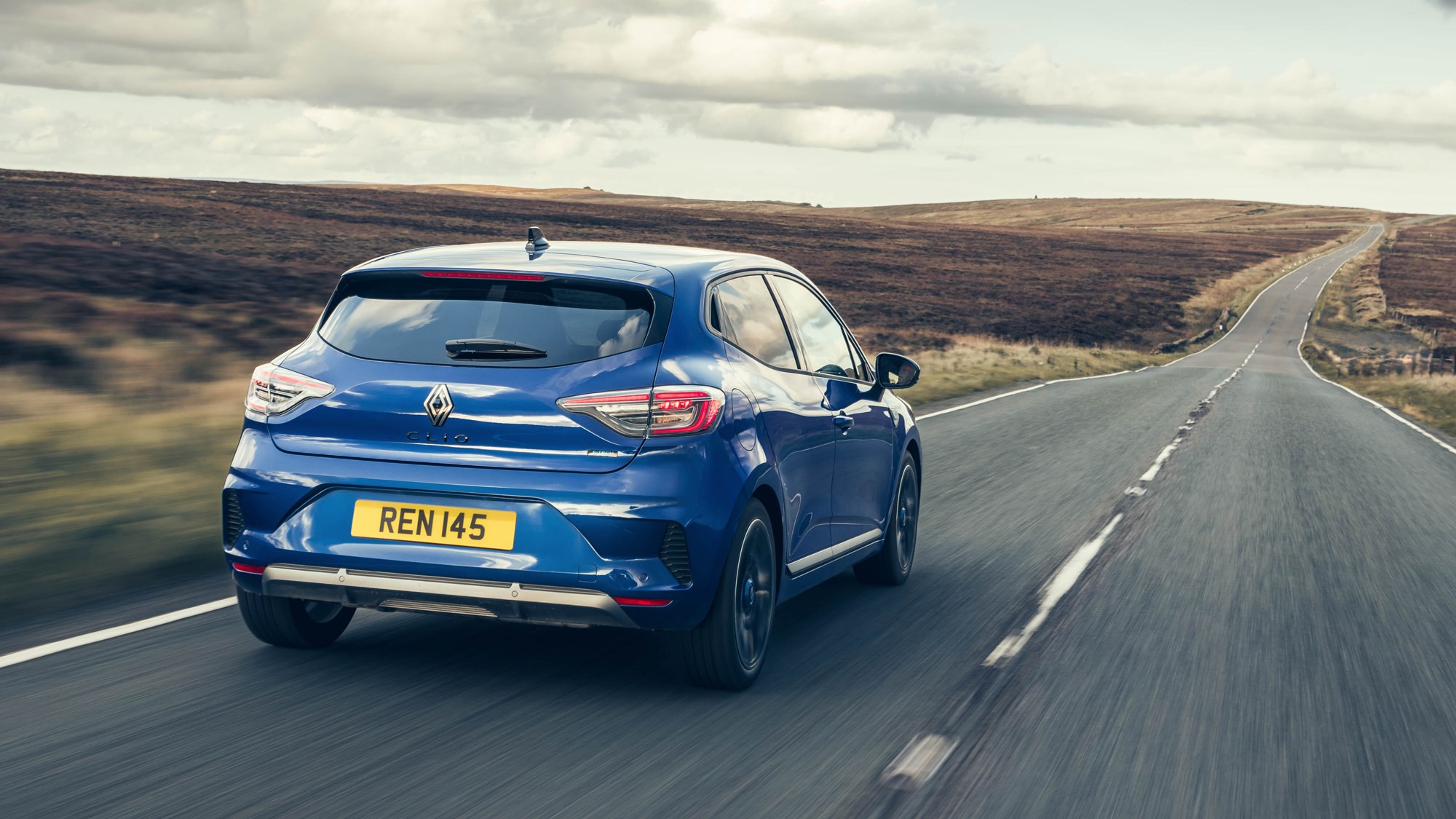
But are the changes enough to thrust the Clio to the top of its class? Even though its biggest rival is dead, there are still plenty of competitors. The Toyota Yaris is fitted with an equally efficient hybrid system, the SEAT Ibiza gives it a good run for its money in the driveability stakes and the Vauxhall Corsa is available with an even greener pure electric powertrain.
What are the specs?
You still have two engines to choose from. The cheap option is a turbocharged 1.0-litre three-cylinder petrol engine with 89bhp. It’s mated to a six-speed manual gearbox and can get from 0–62mph in 12.2 seconds, which should be more than enough for most buyers. More importantly, it has an official WLTP fuel economy figure of up to 54.3mpg.
Above that, there’s a self-charging hybrid powertrain. It’s called the E-Tech full hybrid and it features the same 1.6-litre petrol engine, electric motor and 1.2kWh battery pack found in the likes of the Arkana and Captur SUVs. It boosts the Clio’s power output to 143bhp and drops its 0–62mph time down to 9.3 seconds.
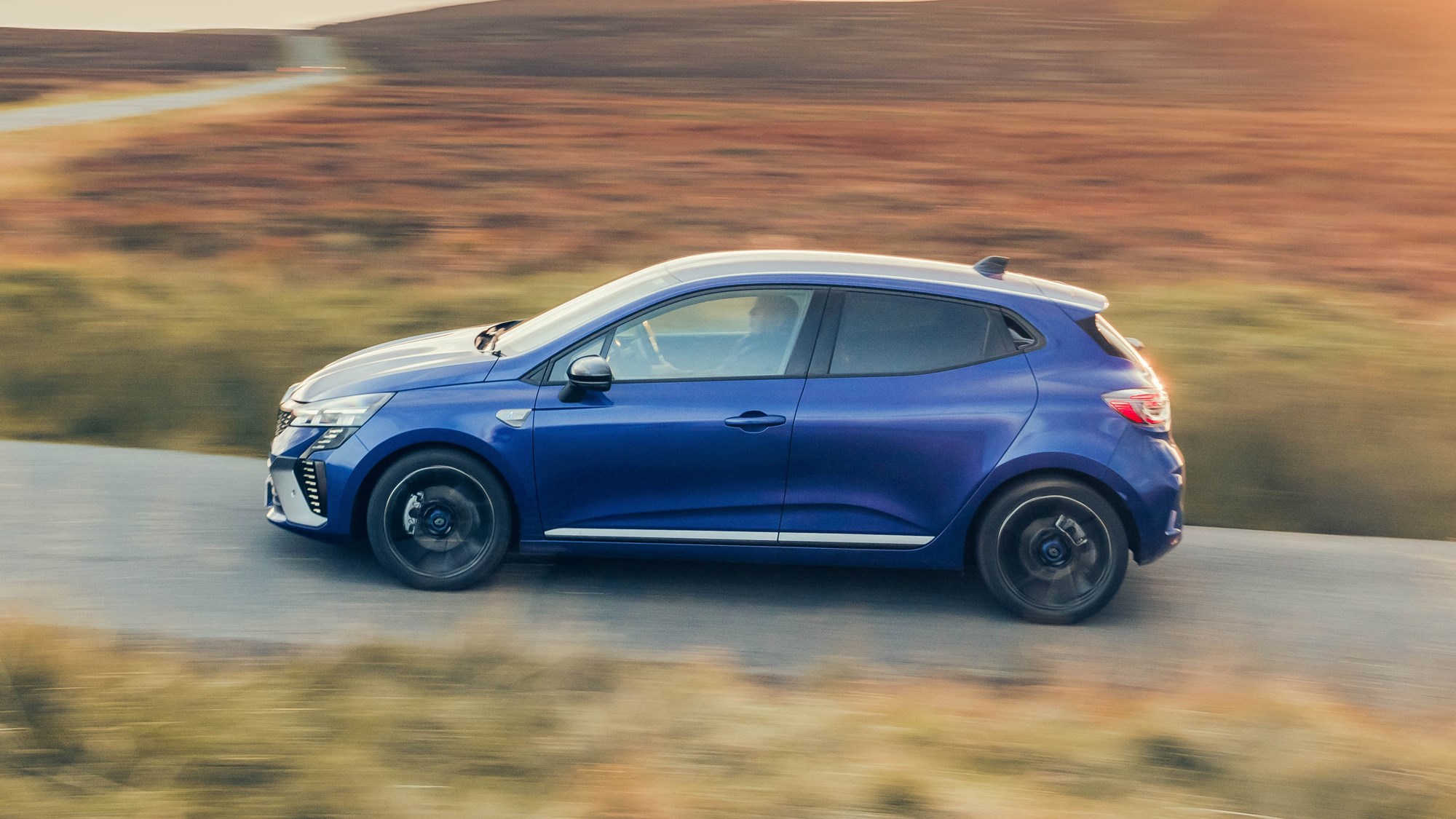
The hybrid model also has a healthy increase in torque over the pure petrol model, thanks to the electric motor. Plus, Renault says it can return up to 67.3mpg on the WLTP combined cycle, which isn’t too far from the truth. We averaged around 60mpg during our time with the car.
You also get three specifications to choose from called Evolution, Techno and Esprit Alpine. The cheapest model features creature comforts such as air conditioning and cruise control, the middling Techno variant piles on the style with larger 17-inch alloy wheels and tinted rear windows, and the top spec model features sportier front seats and even more equipment, such as a heated steering wheel and a larger infotainment system.
How does it drive?
Much the same as the old model, which is no bad thing. It’s more softly sprung than the likes of the Fiesta and Ibiza, but that just means it can better cope with Britain’s battered road network at full chat. There’s enough travel and pliancy in the suspension setup to thrash down a B-road with no fear of bottoming out over a dip and the extra suppleness means it’s a little more comfortable at a cruise.
The Clio’s steering is quite sharp, too, which makes it feel nimble and eager. However, the resistance in the rack fades as you apply more lock, which makes it harder to judge where the front wheels are pointing. You can get around this issue by switching the car to Sport mode, as it backs off some of the power assistance.
If you want your Clio to offer you the maximum amount of driver engagement, make sure you opt for the basic, manual equipped model. The engine’s rather meagre output means you’re constantly stirring through the gearbox to keep the revs up. One botched gearchange can be the difference between having the power to accelerate out of a corner or not.
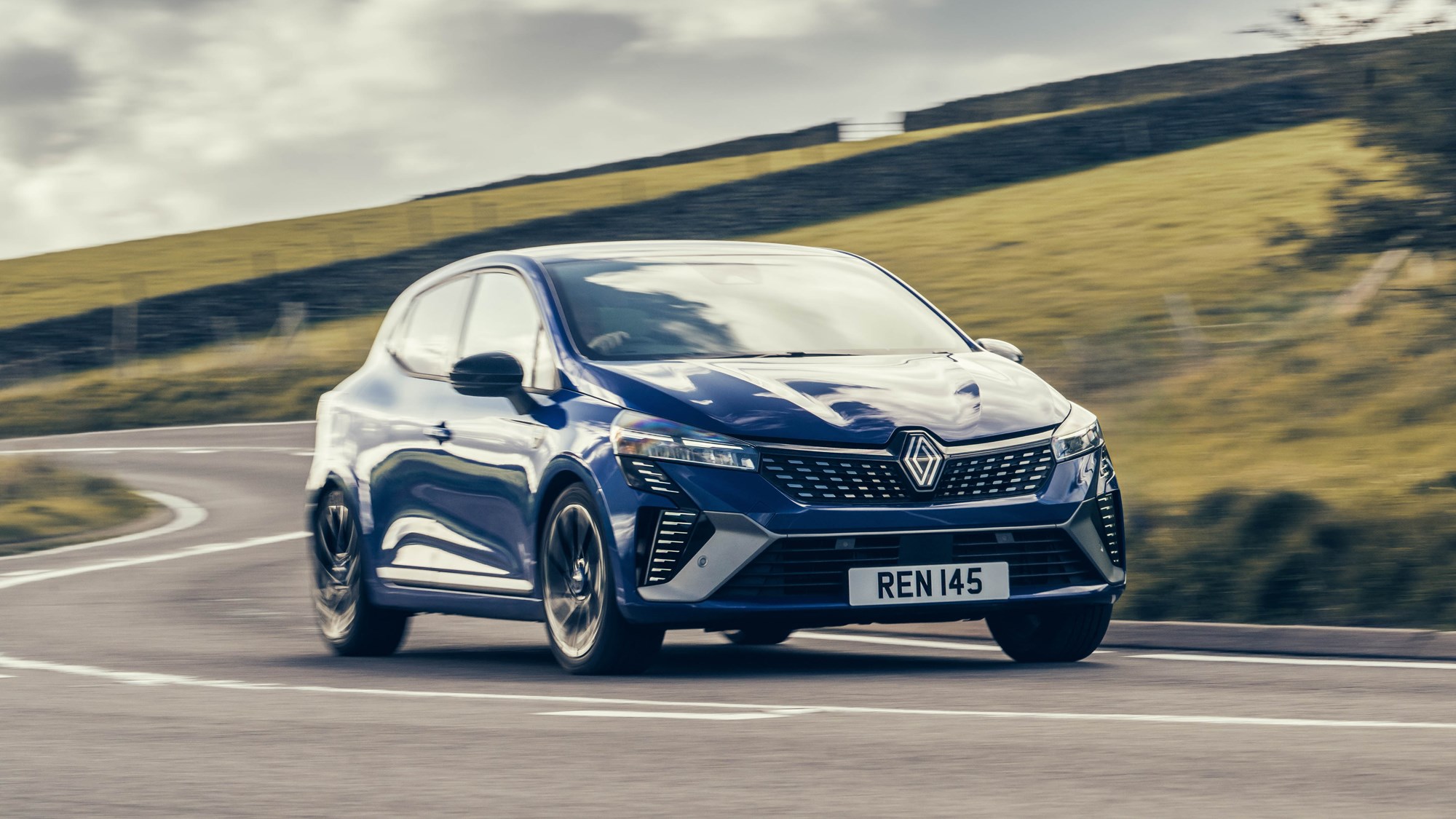
Thankfully, the Clio’s manual gearbox is great fun to use and Renault nailed the car’s pedal weights, which means you’ll never tire of shifting between second, third and fourth on a twisty road. The hybrid model is a lot less engaging because it’s only available with a manual gearbox, but it makes up for that with better straight-line performance.
But the biggest change benefitting the Clio is the fact its greatest rival has been pulled from the showrooms. Now the Ford Fiesta is dead, the Renault finds itself very close to top of its class on the handling front, sitting just behind the MINI Hatch.
What about the interior?
The Clio’s cabin is much the same as before, albeit with some extra tech. The infotainment systems are the same units as before (measuring either 7.0 inches or 9.3 inches depending on specification), but both now come with wireless Apple CarPlay and Android Auto as standard. They’re starting to show their age, too – the graphics look a little dated and it takes a few seconds for the screen to display the drive mode screen when you prod the button on the dash.
The highlight is the exemplary new digital instrument cluster. It isn’t too fancy or complicated, but it’s crystal clear and all the information you need is immediately accessible. There’s a degree of customisation, too, and it’s easy to configure.
Our test car, the new Esprit Alpine model, also came with a few extra sporty touches. The bolstered sports seats are remarkably comfortable, and there’s cloth trim on the dash, complete with French flag embroidery. The blue-trimmed seat belts and the red, white and blue stitching on the steering wheel complete the look.
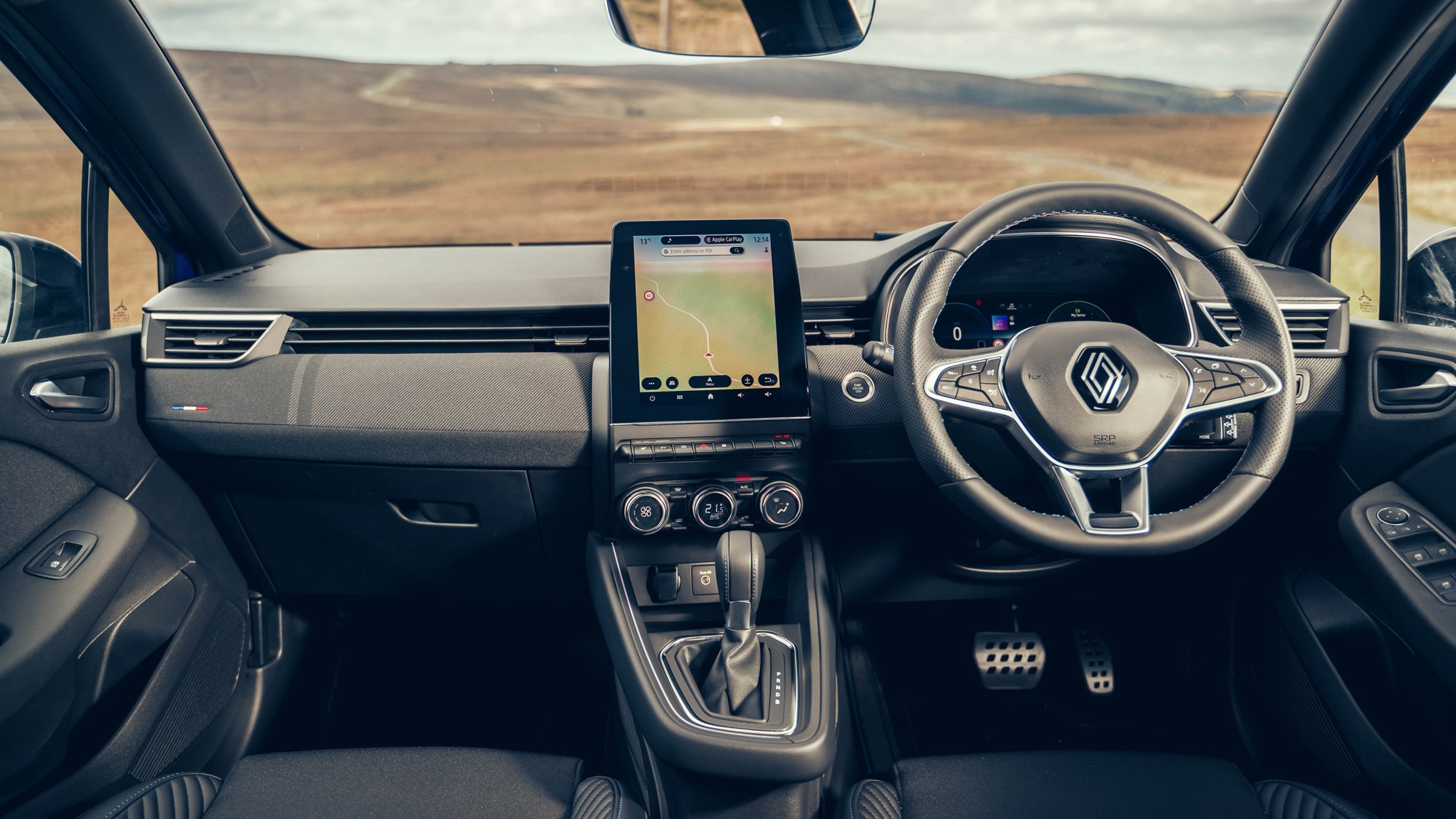
Happily, the updated Clio is as practical as the previous model. Its 391-litre boot is enormous from the class, trouncing the likes of the Hyundai i20, SEAT Ibiza and Vauxhall Corsa. In fact, the Clio’s boot is even more spacious than the Volkswagen Golf’s – and that car sits in the class above.
There’s a price to pay for this practicality, though. The Clio sacrifices rear seat space for boot capacity, which means tall passengers may find it a bit of a squeeze. Legroom is a little tight. The seat itself is quite comfortable and supportive, though, and you get a pair of Isofix mounts for child seats.
Before you buy
Have a read of this. Prices for the facelifted Clio start from £17,795, which puts it on level-pegging with the Skoda Fabia. It also makes it around £2,000 cheaper than the likes of the SEAT Ibiza and Hyundai i20. You don’t even make too many equipment sacrifices. Even the basic Evolution model comes with LED headlights, automatic air conditioning, cruise control and rear parking sensors.
You’re better off opting for the Clio if you want the self-charging hybrid model, too. Prices start from £21,295, which is almost £1,000 less than you’ll spend on the equivalent Toyota Yaris. Plus, the Clio hybrid has an extra 29hp over the cheapest Yaris.
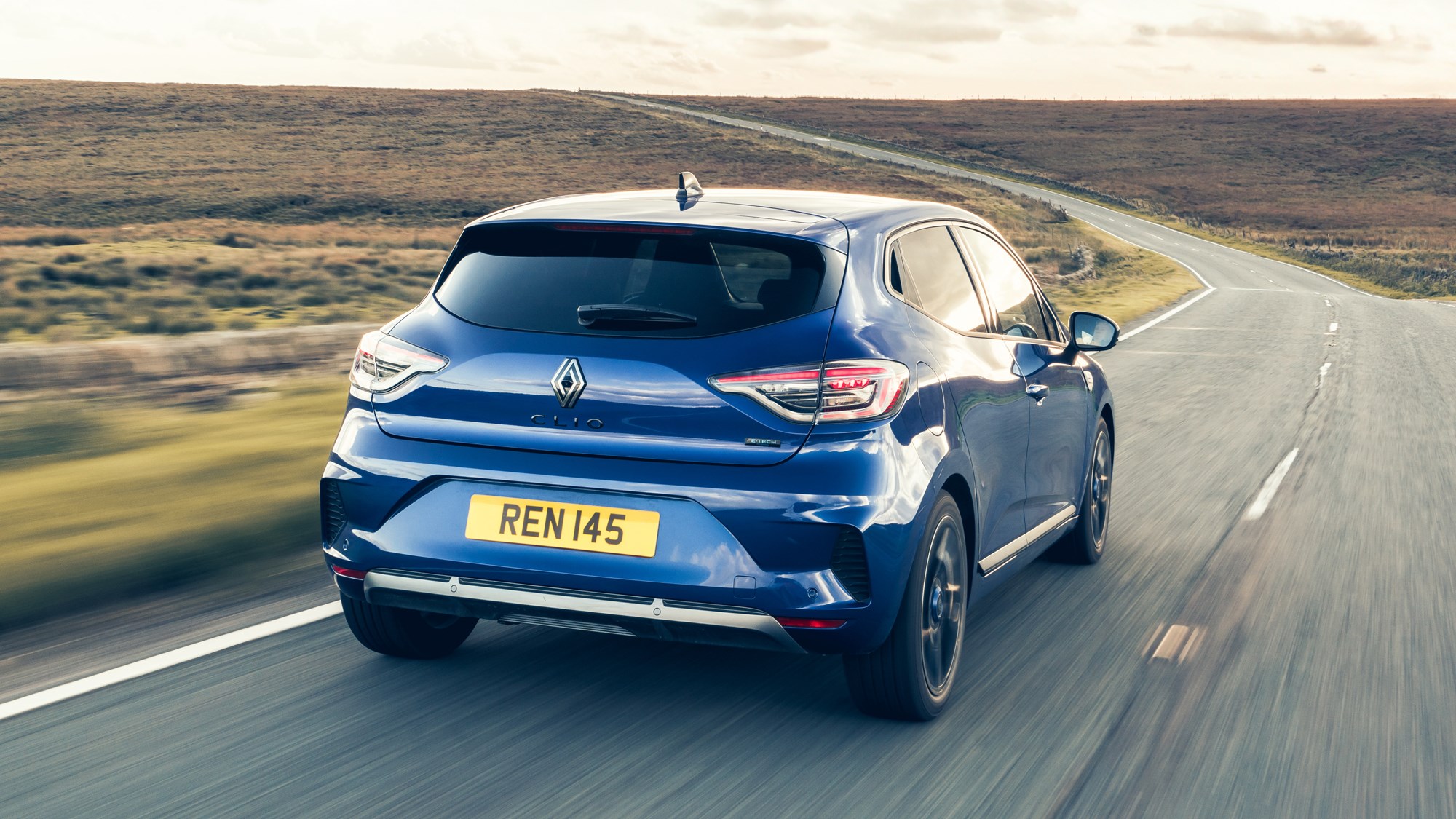
As it stands, there are just two reasons why you wouldn’t consider the facelifted Clio if you’re in the market for a supermini. The first is that you want something cheaper – in which case, you should opt for the mechanically similar Dacia Sandero. The second is because you value driving dynamics more than the prestige of owning a brand-new car and you’re shopping for a lightly used Ford Fiesta.
Verdict
The changes to the Clio are pretty minimal, but that isn’t much of a criticism. The new version is just the same likeable little hatchback we’re used to, but now it has a bit more tech and an updated exterior. A big boot, stylish design and a choice of efficient powertrains will continue to work in its favour, so it remains among the best small hatchbacks out there.